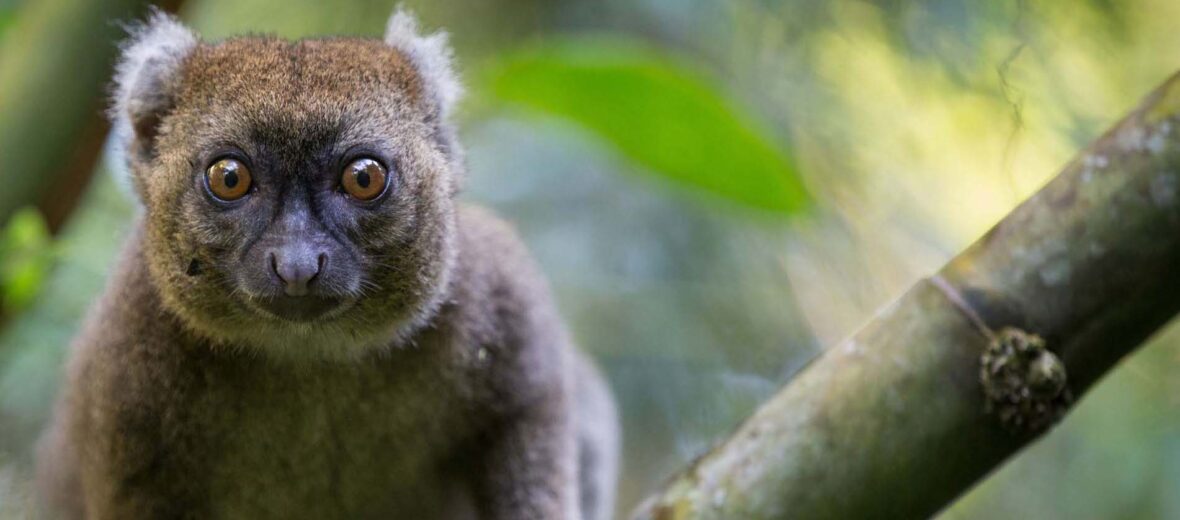
The greater bamboo lemur is the largest of the 3 bamboo lemur species and one of only a few mammals, having a predominantly bamboo-based diet. This sedentary creature spends a majority of the day eating mostly bamboo. It has to eat a lot of it in order to survive, as bamboo is not a very nutritious diet. The greater bamboo lemurs were initially discovered in 1870. Unfortunately, due largely in part to deforestation, they have become fragmented and only about 500 exist in the wild today. They were so seldom seen that they were thought to have gone extinct, until they were rediscovered in 1972. They prefer humid primary rainforests with old growth bamboo trees. The IUCN lists these lemurs as Critically Endangered.
First the Stats…
Scientific name: Prolemur simus
Weight: Up to 5.3 lbs.
Length: Up to 17 inches+
Lifespan: Up to 17 years
Now on to the Facts!
1.) These primates live in Madagascar, near Vondrozo, and in the Andringitra Massif.
2.) They are primarily arboreal (spend most or all of their lives in trees), but can be seen on the ground.
3.) Bamboo lemurs are strict herbivores (eat only plant matter), feeding almost exclusively on bamboo.
4.) 2% of their diet consists of flowers, soil, leaves, and fruits. The remaining 98% is bamboo.
5.) They occasionally eat soil to gain essential minerals.
But wait, there’s more on the greater bamboo lemur!
6.) The bamboo lemurs are crepuscular (active at dawn and dusk). However, they have been spotted foraging at night (nocturnal).
7.) One of the main calls they make is what has been referred to as the “contact call”. This is a loud yelping sound, which is used to gather the group members together.
Did you know…?
The word ‘lemur’ means “ghost” or “spirit of the dead”, in Latin.
8.) Being polygamists, the males will often have more than 1 female companion.
9.) Groups of up to 28 of these critters are sometimes seen, however, the average group size is 4 – 7.
10.) Mating occurs between May – June. Females typically give birth to a single baby in November, during the transitional dry and wet seasons.
Now a Short Greater Bamboo Lemur Video!
Also, check out the Critter Science YouTube channel. Videos added frequently!
Want to suggest a critter for me to write about? Let me know here.



